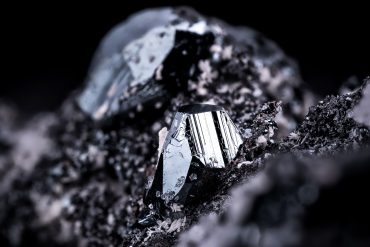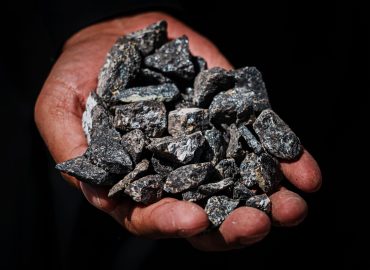
- Critical Minerals
- Investing
- Rare Earths
- Supply Chains
US Secures Rare Earth Supply With Australia to Counter China
6 minute read

U.S. government investment in critical minerals mining strengthens supply chains and reduces Chinese market dominance through Australian partnerships
Key Takeaways
- Australian mining stocks surge up to 6% following reports of U.S. government plans to acquire equity stakes in critical minerals companies to reduce dependence on China.
- U.S. expands critical minerals list to 54 commodities as part of broader strategy to diversify supply chains away from China after restrictions on rare earths exports.
- 15 Australian companies visit Washington for funding discussions as U.S. officials propose debt, equity, and offtake agreement models for strategic mineral projects.
Introduction
Australian critical minerals companies experience significant stock gains as the U.S. government unveils plans to acquire equity stakes in mining operations crucial to national security. This strategic initiative represents a major shift in America’s approach to securing supply chains for materials essential to clean energy, defense, and technology sectors.
The move comes as tensions escalate over China’s dominance in critical minerals markets, with Beijing recently implementing restrictions on rare earth exports in response to U.S. trade policies. American officials now prioritize building resilient supply chains through partnerships with allied nations, particularly Australia.
Key Developments
The U.S. government’s strategy centers on equity participation as part of a comprehensive funding package designed to expand critical minerals supply chains. Officials have been actively encouraging Australian companies to submit project proposals for potential investment through various financial instruments.
A delegation of 15 Australian companies, including Cobalt Blue and International Graphite, recently traveled to Washington for high-level discussions about financing opportunities. These meetings signal the administration’s commitment to fostering collaboration between U.S. officials and Australian mining executives.
The initiative aligns with the draft 2025 U.S. Critical Minerals List, which expands to 54 commodities from previous versions. This expansion reflects growing recognition of supply chain vulnerabilities across sectors ranging from semiconductors to renewable energy infrastructure.

Market Impact
Sydney-listed mining companies respond positively to the news, with several stocks posting notable gains. Pilbara Minerals rises 5% while Lynas Rare Earths, the largest rare earths supplier outside China, climbs over 2%.
Alkane Resources gains 3.5% and Northern Minerals jumps nearly 6% as investors price in potential U.S. government backing. The broader Australian S&P/ASX 300 Metals & Mining index advances more than 2%, reflecting sector-wide optimism.
Market analysts note that assets in “friendly jurisdictions” like Australia now command premium valuations due to their strategic importance and reduced geopolitical risk. This trend supports the concept of friend-shoring, where companies source materials from allied nations to manage political uncertainties.
Strategic Insights
The U.S. approach involves multiple financial mechanisms, including no-cost warrants as part of private sector investment strategies. Earlier reports indicate the Department of Energy plans to acquire 5% stakes in companies like Lithium Americas and its Thacker Pass joint venture with General Motors.
Critical minerals such as lithium, cobalt, and rare earths prove essential for clean energy technologies, semiconductors, and defense applications. The inclusion of copper and silver reflects their growing importance in electrification and renewable energy infrastructure.
The addition of rhenium to the critical minerals list highlights the intersection of technology and national security, as this metal proves vital for high-temperature superalloys in jet turbines and advanced defense systems. The USGS disruption model identifies minerals like rhodium, dysprosium, and gallium as highest risk through analysis of over 1,200 trade scenarios.
Expert Opinions and Data
Andrew Worland, CEO of International Graphite, emphasizes that U.S. government backing provides essential risk mitigation for mining projects. His company explores American expansion opportunities while building facilities in Western Australia targeted at defense and clean energy supply chains.
Industry analysts highlight that geopolitics now matters as much as geology in mineral investments. Companies embedded in secure, transparent, allied supply chains position themselves to capture greater value as governments prioritize supply chain resilience.
Funding models involving debt and equity, alongside prepay offtakes, emerge as preferred approaches for government partnerships. Australian Strategic Materials conducts detailed due diligence in Oklahoma and South Carolina, while Ionic Rare Earths pursues advanced discussions for Tennessee operations.
However, some industry voices urge caution, noting that while policy signals appear strong, actual investment flows and permitting reforms will prove critical to realizing these opportunities.
Conclusion
The U.S. critical minerals policy shift reshapes investment strategies and supply chain priorities across technology and defense industries. Australian mining companies benefit from enhanced access to American markets, government incentives, and strategic partnerships that reduce geopolitical risk.
This development signals a fundamental change in how governments approach resource security, with implications extending beyond individual companies to entire sectors dependent on critical materials. The emphasis on allied partnerships creates new opportunities for Australian firms while supporting broader Western supply chain resilience efforts.







